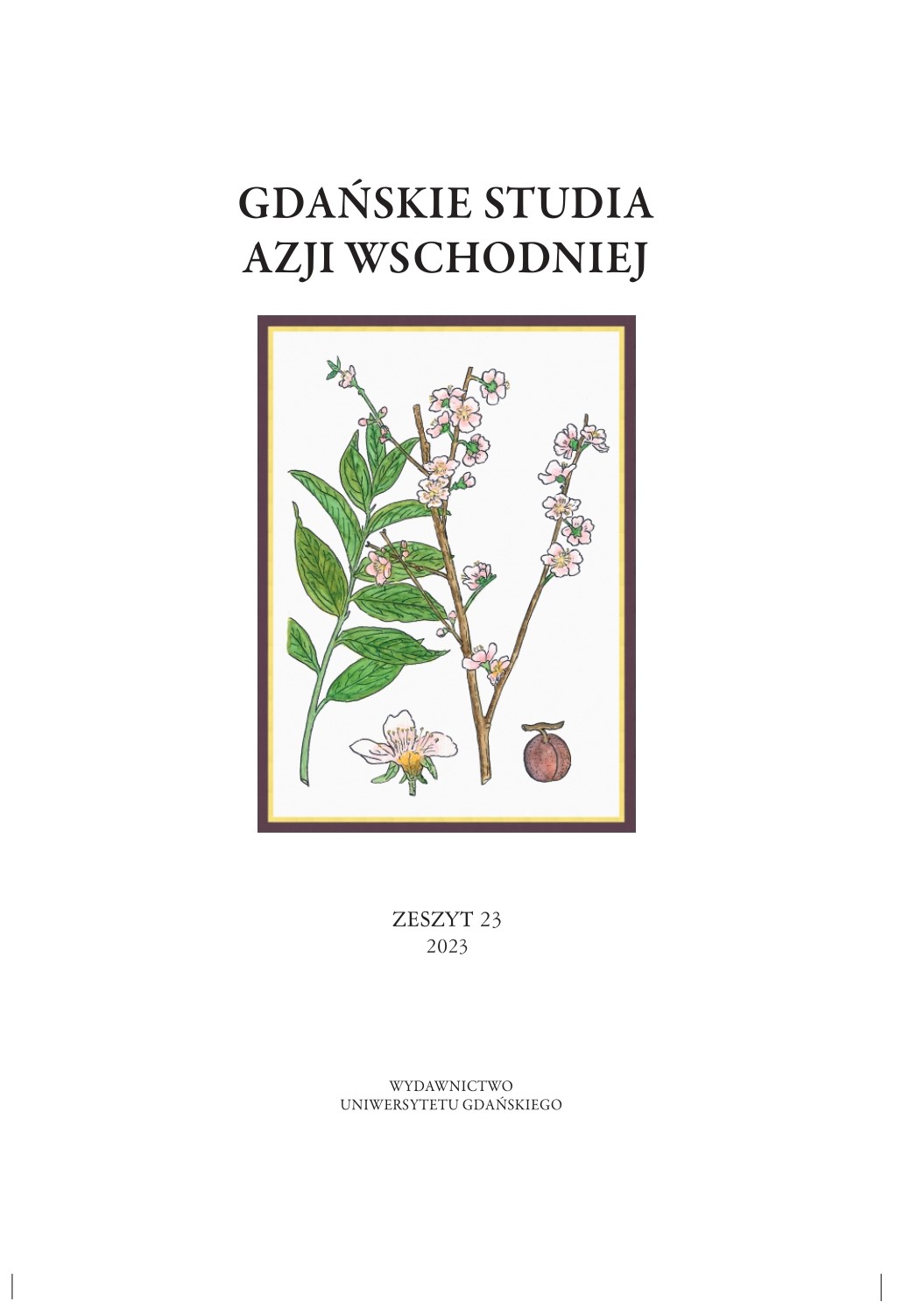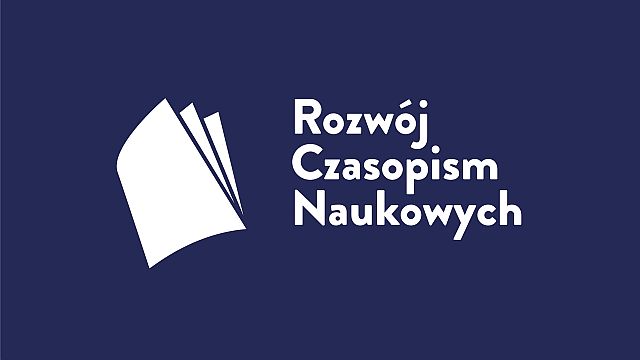Powstanie i cechy palety barw Kangxi wucai 康熙五彩 oraz falangcai 珐琅彩 – spotkanie kultur a estetyka podwójnej obcości Część I: problematyka terminologii i badań nad porcelaną eksportową
Abstrakt
This essay focusses on issues connected with research into the history of exported porcelain from the Far East. To this end, it discusses the literary context of the expressions “the family of roses” and “the family of greens,” and also the genesis, main features, and current terminology relating to the two most widespread techniques of glaze-painting decoration (Kangxi wucai 康熙五彩 and falangcai 珐琅彩).
The article discusses the most important techniques of decoration that preceded the development of the Kangxi wucai palette and the relations between technological development and the taste of the period. It also indicates the important items in Polish collections, especially in the National Museum in Gdańsk. From the holdings of this museum, the author selects a plate decorated with wild geese on Lake Taihu. An analysis of the plate – with regard to the technology of its production, aesthetics, and iconography – is the main element in the article. Polish items are presented in the context of important European collections: the British Museum, the Victoria and Albert Museum, the Musée Guimet, the National Museum in Oslo, and the Museo Correr in Venice.
The author formulates a new term in art theory: the aesthetics of double foreignness. It makes it possible to give a name to a phenomenon that develops in the process of reception and analysis of objects produced in one developed and isolated civilization, intended for and commissioned by a second civilization.
Downloads
Bibliografia
Arapova T. (Арапова Т.), Kitaiiskii farfor v sobranii Ermitaza. Konets XIV – pervaiia tret XVIII v. (Китайский фарфор в собрании Эрмитажа), Leningrad 1977.
Beurdeley M., La céramique chinoise, Editions d’art Charles Moreau, Paris 2005.
Budde H. von (hrsg.), Europa und die Kaiser von China 1240–1816, Berliner Festpiele, Frankfurt 1985.
Castelluccio S., Le goût pour les porcelaines de Chine et du Japon à Paris aux XVIIe et XVIIIe siècles, Éditions Monelle Hayot, Château de Saint-Rémy-en-l’Eau 2013.
Colomban Ph., Zhang Yizheng, Zhao Bing, Non-invasive Raman analyses of Chinese huafalang and related porcelain wares. Searching for evidence for innovative pigment technologies, „Ceramics International” 2017, vol. 43, issue 15.
Eberhard W., Symbole chińskie. Słownik, Universitas, Kraków 2007.
Eusebi M., Burgio E. (eds.), Le Devisement du Monde, Edizioni Ca’ Foscari Digital Publishing, Venezia 2018.
Fontana M., Matteo Ricci. Un gesuita alla corte dei Ming, Mondadori, Milano 2005.
From Beijing to Versailles: Artistic relations between China and France, Hong Kong Museum of Art i Musée national des arts asiatiques-Guimet, Hong Kong 1997.
Grigaut P.L., A famille rose bottle vase, „Bulletin of the Detroit Institute of Arts” 1949, vol. 28, no. 2.
Harrison-Hall J., Catalogue of late Yuan and Ming ceramics in the British Museum, British Museum Press, London 2001.
Huiyi Wu, The Observations We Made in the Indies and in China, „East Asian Science, Technology, and Medicine” 2017, no. 46.
Jacquemart A., Le Blant E., Histoire artistique, industrielle et commerciale de la porcelaine, J. Techener Libraire, Paris 1861–1862.
Jaźwińska M., Pudlis A., Porcellane orientali della Fondazione Musei Civici di Venezia, „Bollettino dei Musei Civici Veneziani” 2016/17, no. 11–12, III serie.
Kilarska E., Ceramika dalekowschodnia [w:] Straty wojenne Muzeum Miejskiego i Muzeum Rzemiosł Artystycznych w Gdańsku, t. 3, Straty w dziedzinie ceramiki, red. M. Stempowska, Muzeum Narodowe w Gdańsku, Gdańsk 2007.
Kingery D.W., Vandiver P.B., Ceramic Masterpieces: Art, structure, and technology, The Free Press, New York – London 1986.
Krahl R., Ayers J., Chinese ceramics in the Topkapi Saray Museum Istanbul. A complete Catalogue, vol. 1–3, Sotheby, London 1986.
Li He, Chinese Ceramics: The new standard guide, Gardners Books, London 2006.
Li He, La céramique chinoise, L’Aventurine, Paris 1996.
Lion-Goldschmidt D., La porcelaine Ming, Office du Livre, Fribourg 1978.
Madsen A.D., White C.L., Chinese Export Porcelains, Routledge, London 2009.
Makariou S., Degawa T., Déléry C., Porcelaine. Chefs-d’œuvre de la collection Ise, Musée Guimet, Paris 2017.
Morena F., Dalle Indie orientali alla corte di Toscana. Collezioni di arte cinese e giapponese a Palazzo Pitti, Giunti Editore, Firenze 2005.
Rawski E.S., Rawson J. (eds.), China: The three emperors 1662–1795, Royal Academy of Arts, London 2006.
Rinaldi M., Kraak porcelain: A Moment in the History of Trade, Bamboo Publishing, London 1989.
Varela Santos A., Portugal na Porcelana da China, vol. 1–4, Artemágica, Lisbona 2009.
Valenstein S.G., A Handbook of Chinese Ceramics, Metropolitan Museum of Art, New York 1989.
Wu Tung, Earth Transformed: Chinese ceramic in the Museum of Fine Arts, Boston, MFA Publications, Museum of Fine Arts, Boston 2001.
Yang Guimei, An illustrated brief history of Chinese Porcelain: history, culture, aesthetics, trans. A. Hardie, Shanghai Books, New York 2021.
Zasławska D., Czarka ze spodkiem [w:] Virtus et splendor. Sztuka w życiu Włochów XIV–XVII w. Wystawa ze zbiorów Fundacji XX. Czartoryskich, Muzeum Narodowe w Gdańsku, Gdańsk 2014.
Żygulski Z., Filiżanka wielkiego wezyra Kara Mustafy [w:] Odsiecz Wiedeńska 1863. Tło historyczne i materiały źródłowe. Wystawa jubileuszowa w Zamku Królewskim na Wawelu w trzechsetlecie bitwy, red. A. Franaszek, K. Kuczman, t. 1, Państwowe Zbiory Sztuki na Wawelu, Kraków 1990.

 Uniwersyteckie Czasopisma Naukowe
Uniwersyteckie Czasopisma Naukowe





